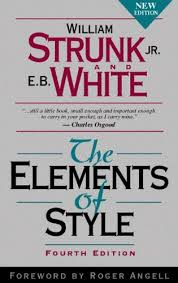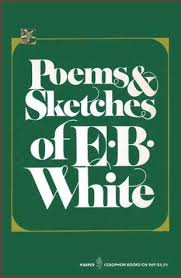- HOME
- INTRO TO THE FORUM
- USE AND MISUSE
- BADLY WRITTEN, BADLY SPOKEN
- GETTING
TO KNOW ENGLISH - PREPARING FOR ENGLISH PROFICIENCY TESTS
- GOING DEEPER INTO ENGLISH
- YOU ASKED ME THIS QUESTION
- ADVOCACIES
- EDUCATION AND TEACHING FORUM
- ADVICE AND DISSENT
- MY MEDIA ENGLISH WATCH
- STUDENTS' SOUNDING BOARD
- LANGUAGE HUMOR AT ITS FINEST
- THE LOUNGE
- NOTABLE WORKS BY OUR VERY OWN
- ESSAYS BY JOSE CARILLO
- Long Noun Forms Make Sentences Exasperatingly Difficult To Grasp
- Good Conversationalists Phrase Their Tag Questions With Finesse
- The Pronoun “None” Can Mean Either “Not One” Or “Not Any”
- A Rather Curious State Of Affairs In The Grammar Of “Do”-Questions
- Why I Consistently Use The Serial Comma
- Misuse Of “Lie” And “Lay” Punctures Many Writers’ Command Of English
- ABOUT JOSE CARILLO
- READINGS ABOUT LANGUAGE
- TIME OUT FROM ENGLISH GRAMMAR
- NEWS AND COMMENTARY
- BOOKSHOP
- ARCHIVES
Click here to recommend us!
ESSAYS BY JOSE CARILLO
On this webpage, Jose A. Carillo shares with English users, learners, and teachers a representative selection of his essays on the English language, particularly on its uses and misuses. Every essay featured here will be archived in the forum.
Homage to coauthor of Strunk and White’s “The Elements of Style”
As a companion piece for “Writer’s Seat,” a homage by The Weekly Standard senior editor Andrew Ferguson to the legendary coauthor of Strunk and White’s The Elements of Style in the magazine’s September 11, 2017 issue, I am taking this opportunity to make a brief retrospective on E.B. White. I am writing this piece especially for English-language writers and aspiring writers in the Philippines, that they may know a little more about the American literary writer who, along with the grammarian William Strunk Jr., is credited to have cowritten that book. In truth, as I had written in a Manila Times column way back in 2002, E.B. White only edited Strunk’s grammar primer for publication and added to it as an afterthought an excellent 20-page chapter on style.

E.B. White looks at his pet dachshund Minnie while typing in his office at the New Yorker Magazine, New York. Credit: New York Times Co./Getty Images.
In 2009, The New York Times ran a commemorative forum that year on the 50th anniversary of the publication of that book. That commemorative forum, entitled “Happy Birthday, Strunk and White!”, featured five critiques of the book by as many present-day English grammar luminaries. Prompted by the audacity and at times outright ferocity of bashers of The Elements of Style in that commemorative piece, I made a posting in the Forum in May 2009 in defense of Strunk and White.
In that 2009 Forum posting, (“Throwing More Punches at the Venerable Strunk and White”) I resuscitated my own and much earlier take on the iconic book in an essay I wrote for my “English Plain and Simple” column in The Manila Times sometime in 2002.






Here, in full, is that essay:
A Matter of Style
It is most unfortunate that the most popular and enduring book on English grammar, Strunk and White’s The Elements of Style, is a classic misnomer. Of course, there is no doubt that generations of would-be writers have greatly benefited from its wisdom since its publication in 1918, making it one of the 100 best-selling nonfiction books of all time. But this book is not a book primarily on writing style, but simply a basic English grammar manual, a list of words and expressions commonly misused, and a stylebook for the visual look of the printed word. Only much later—in 1957—did its latter-day co-author, E. B. White, add to the book an excellent 20-page chapter on style as an afterthought. Perhaps, then, the book should have been more appropriately entitled The Elements of Grammar.
Strunk and White certainly will help English learners craft correct and coherent sentences, and for that I commend the book heartily to everyone. I learned a lot myself from the slim, venerable volume, which validated in Spartan ways the grammars I learned in trickles since I was a little boy entranced by the strange forms and textures of English. But the book really does not purposively aspire to teach writing as an art form; for that we have to look for enlightenment elsewhere. I therefore find it sad that like me in the beginning, many of those who learn the book’s elementary precepts and nothing else could entertain the notion that they had adequately prepared themselves to become English-language writers. I think this probably explains why many people who swear by Strunk and White and get themselves published really have very little to offer beyond the basic ability to collect information and write grammatically correct but largely puerile sentences.
The truth of the matter is that writing style presupposes proficiency in English grammar, form, and structure; without this, style cannot exist at all. Style is much more complex than stringing words into sentences and cobbling sentences to form paragraphs. Its true elements are word choice, sentence form and structure, tone, and attitude. More learned people call these elements the aesthetics, poetics, and logics of writing, but it is incredible how their supposedly rigorous application in academe often produces some of the most sterile, insipid, and anaesthetic writing on this planet. In any case, it is through these elements that writers can convey information about a subject and their feelings and attitudes about it. Through them, writers can establish a fruitful, silent dialogue with the reader. Style is, in fact, simply the final outcome of these elements, the projection of the writer himself in words and the true measure of his confidence, imagination, and creativity.
Of the elements of style, word choice is undoubtedly the most powerful. A wide vocabulary can greatly add to this power, of course, but it is a myth that this wideness alone will make anyone a good writer. There are today over 200,000 basic English words, and it has been estimated that William Shakespeare in his time had used only around 30,000, yet almost 600 years later these words still speak to us compellingly about the human condition. This is clear proof that more important than vocabulary is the writer’s purposive use of words not for their own sake, but to elicit predetermined responses from the reader. A writer thus cannot achieve felicity of style unless he knows the precise meaning and tonalities of words, their connotations, and the emotional tags that usually go with them.
Next among the elements is sentence form and structure. It is how the writer manages his words and sentences to convey his thoughts and feelings to the reader. This is actually the creative part of writing, a process that calls into play both the imagination and personality of the writer, and it would be a mistake to think of creativity as the domain solely of literary writing. It is needed even in the most simple memos, personal correspondence, and newspaper feature articles. And it must be kept in mind that although the most successful writers use plain and simple English, there is actually no standard for simplicity or complexity in writing. What matters most is the sensibility, variety, and cohesiveness that a writer puts into his written work.
Tone and attitude, the two other elements, always work together. They constitute the voice of the writer in conveying his thoughts and feelings to the reader, in much the same way that speakers use inflection, volume, or gestures to make their point to their listeners. Unfortunately, this is the most neglected of the elements of style, resulting in too much unfocused, imprecise, and misdirected writing most everywhere we look.
A common mistake is that people try too hard to write stylishly, aiming for style for style’s sake, which is actually a ridiculous thing. Writing should come across simply and naturally as a genuine expression of the writer’s mind. Those who achieve greatness in their writing are, in fact, those who are inspired by their subject, and whose inspiration shines in the very words that quietly flow out of them in magical communion with the unseen reader.
From English Plain and Simple: No-Nonsense Ways to Learn Today’s Global Language © 2004 by Jose A. Carillo. Copyright 2008 by The Manila Times Publishing Corp. All rights reserved.
Click this link to the read and post comments!
Click to read more essays (requires registration to post)


